Feeling cramped?
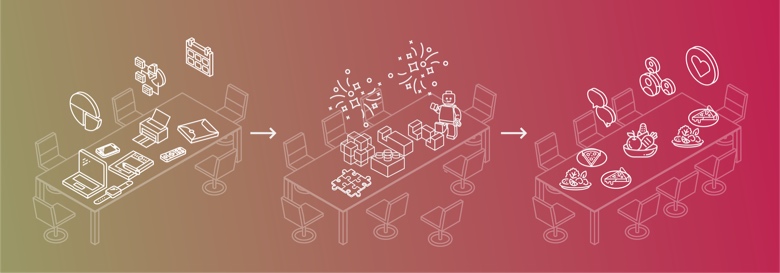
Flexible space makes room for what matters
Space. As the old saw goes, it’s the one thing they’re not making any more. For the last month or so, most of us have been spending more time in fewer spaces, and smaller ones. When you’re working, cooking, sleeping, parenting, and relaxing all under one roof, every square inch counts. In this month’s "On Our Minds…", we’re writing about how storage can help make space for the things that matter most.
On our minds
When something is sitting in plain sight, people tend to be more attentive to it. This is why computer monitors and desks still end up covered in sticky notes, even in the smartphone era. It’s just how humans are wired. However, it also has its limits; when a collection of sticky notes reaches a certain size, it becomes ineffective. It’s just noise. When everything is the top priority, then nothing is.
If that wasn’t clear before, it certainly is now. A third of the workforce went remote essentially overnight. Many people are juggling work, personal lives, and family all at once in a fraction of the space. For many, this has not been an easy transition. Over half of people in a recent survey reported that working from home has made them feel more stressed.
There is some good news, though. The same survey noted that people are happy to be rid of long commutes and to have greater choice about everything from how they work to what they wear. Some people have figured out how to mitigate the negative effects of isolation. Our hope is that we are all learning about what does and does not help us function in our environments—and that what we learn will stick with us when we go back.
For those now working from home, the name of the game is temporary transformation. People are setting up workstations on dining room tables, taking calls in closets, and otherwise adapting to the current reality by making use of their spaces in new ways. While there probably is a lower threshold, it’s amazing to see how little physical space we actually need when it is flexible enough to serve the full range of our needs.
When working with limited square footage, at home or at work, the ability to transform a space is not a luxury; it’s a requirement. Incidentally, doing so may also help diffuse the anxiety of the moment. This practice of temporary transformation is one of the sensibilities that we hope people take back to work with them. When we think of the workplace as static, we miss the potential for change. When we store our stuff haphazardly, it becomes harder to make room for everything we need—both for work and for the rest of our lives.
Eventually, we have to put everything away. The table must be cleared for dinner. We literally need the space to eat, but also metaphorically need the 'space' for the parts of our lives that are not work. As we might say, it takes more than just a workstation to succeed in any environment—and that includes working from home. A month in close quarters with partners or kids or just our work brings...shall we say...a new level of awareness to our multimodal existence, another valuable lesson for when we return to work.
For the time being, we must optimize the spaces that are available to us. There are certainly plenty of home office products that can help us to organize our stuff. (You might also consider scanning that paper that has accumulated.) Perhaps as important, though, is the need to take stock of how we organize our lives. Essentially, we are all hacking our offices every day, cooking up our own individual version of Activity-Based Working for the home. The rhythms of work that evolve during this challenging time will likely be quite different from those that we usually practice; and that's a good thing.
When workplaces begin to reopen, they likely won’t be the same—at least not for a while. In order to maintain social distancing and bring teams together, offices will likely be practicing some version of shared or unassigned desking combined with continued remote working. Equipment and furnishings will be subject to more thorough and frequent cleanings, making clean desk policies desirable. Employees may come back in tranches. In addition to substantive government guidance, each company and space will need a tailor-made approach. (If you'd like some help thinking through this, please reach out to learn more about our return-to-work advisory).
This moment is a wake-up call in a lot of ways. While so many of us are staying home, the earth is taking a breather; this event is literally seismic. The least we can do is try to learn what we can. In last month’s newsletter, we wrote about how self-quantification can empower each person to take more ownership over improving the workplace experience. (BTW, there's still time to fill out the Census). Similarly, deliberate evaluation of the temporary transformations we are practicing now may enable us to return to work with a better idea of what we need, making our lives healthier, more enjoyable, and more sustainable.
From the archives
With technology taking on an even greater role in many people’s work right now, it’s a good time to revisit our 2018 piece about new work roles that are emerging to manage community and integration with building systems. Roles like these stand to make a big difference as companies adapt to a new era in the relationship between people and buildings.
A year ago, we shared our reflections on the most recent Wharton People Analytics Conference. This has been a fixture of our spring events calendar, most notably in 2018, when we won Best Use of Data in the annual startup competition.
That’s about it for this month, but we’d like to hear from you. What is your favorite double-duty space, and what makes it great? Or, you can also just tell us what you’re really doing when the microphone is muted.
In Case You Missed It
Here’s what has had our attention this month (other than home schooling, of course).

First Look at the New lululemon HQ
Since 2018, we’ve been contributing workplace psychology expertise as part of the design team for the new lululemon HQ in Vancouver. Check out the latest renderings!
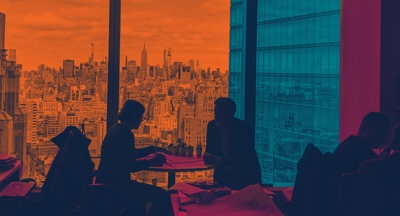
From Data to Delivery
PLASTARC was delighted to join this panel hosted by Ennead, part of Metropolis Magazine’s Think Tank series.
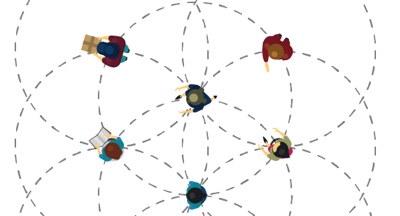
Rethinking Office Space for Lower Density
Workspace Connect interviewed us about what’s needed in the post-COVID workplace.
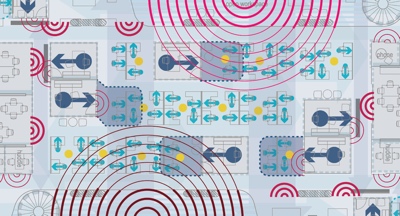
Social Data Brings New Life to AI for Architecture
The third piece in our series on social data for the workplace offers near-future predictions, including developments in AI.
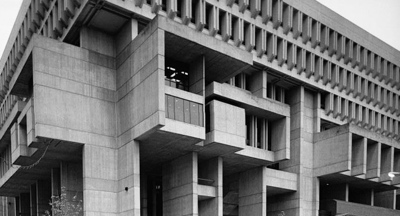
Architecture Mourns Loss of Iconic Talents
Remembering Michael McKinnell and Michael Sorkin for their immense contributions to our lives and our built world.

Virtual Clubbing is a Thing
Need a lift? Pick up some best practices for your next Zoom call! Quarantined revelers turn to tele-clubbing for their nightlife.
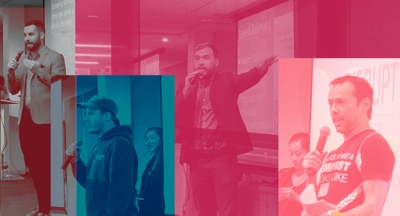
Young Voices Count
The Center for Urban Pedagogy produces this newsletter on student issues and resources. It’s worth a look for those who are educating their kids at home while self-isolating.
Looking Ahead
While many events this spring have been postponed, lots of great virtual events are taking place.

